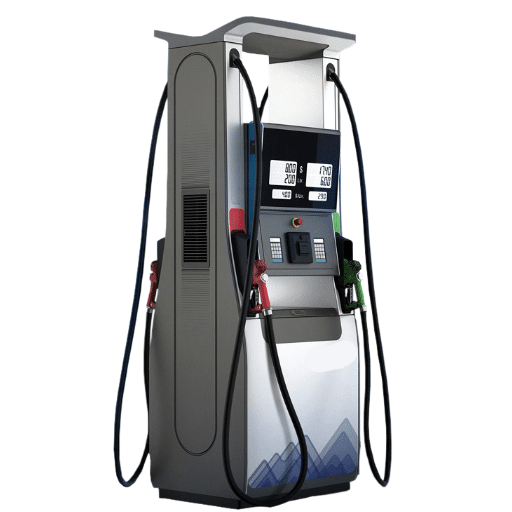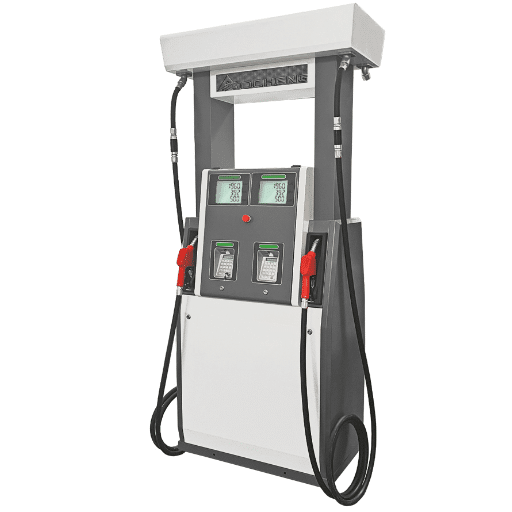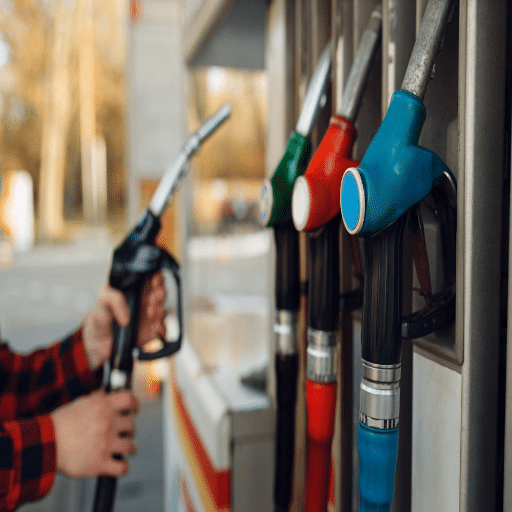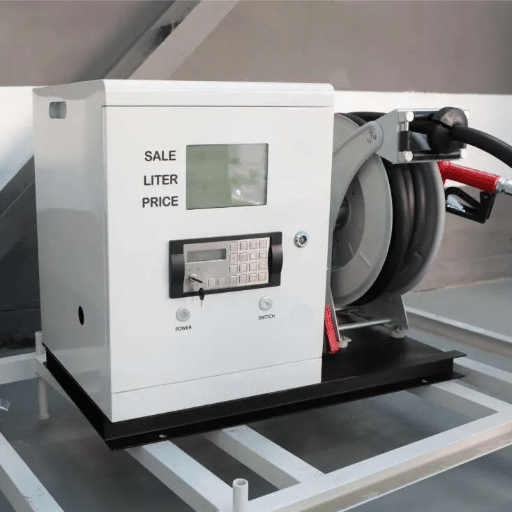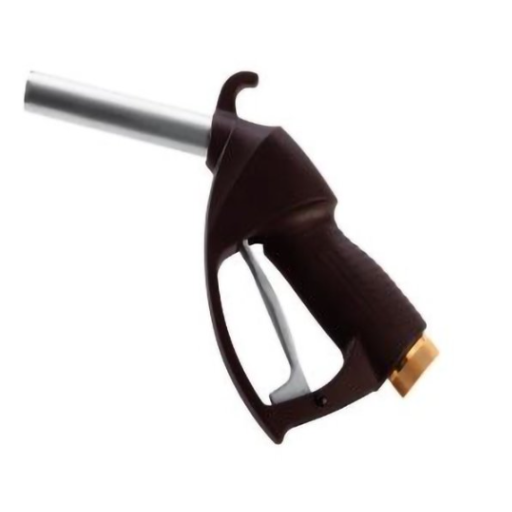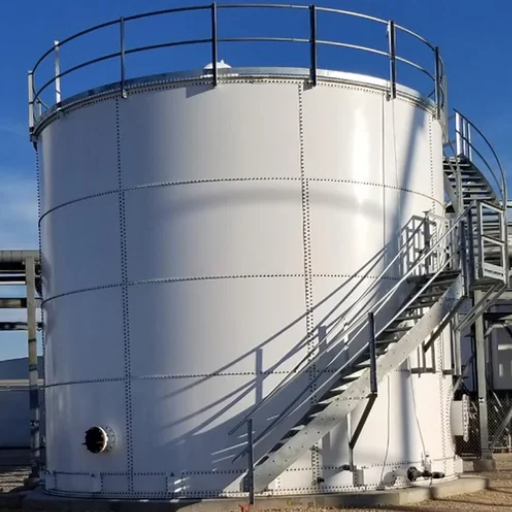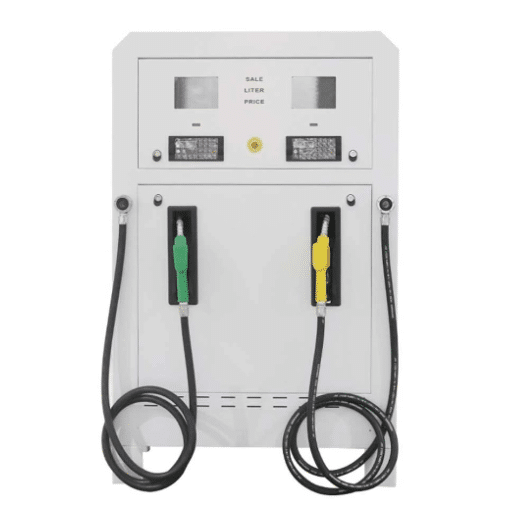Gasoline pumps are an essential part of our everyday lives, yet few would even stop to think about the systems and features that enable smooth operation. From delivering gasoline safely to your automobile to preventing hazards, these machines can be called engineering marvels, designed with precision and safety in mind. This article takes you behind the scenes to unveil the fascinating mechanisms that power gas pumps, exposing the technology and safety measures behind an efficient and safe fuel transfer process. Whether you want to know how gasoline travels from underground tanks to pumps or what sensors are installed to prevent an overflow, our in-depth review will give you a clearer picture of a process that we often overlook.
Introduction to Gas Pumps
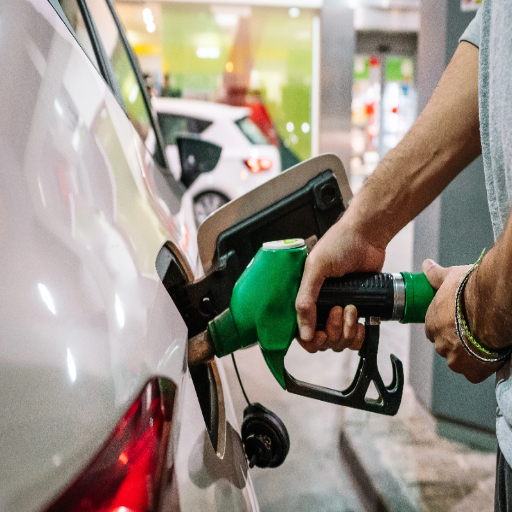
Fuel dispensers are machines that efficiently and safely dispense fuel from underground storage tanks to vehicle tanks. A pump system works with suction or pressure to move gasoline or diesel through the hose and nozzle. An automatic sensor shuts off the fuel flow once the tank is full, preventing spills. In addition, modern gas pumps are now equipped with secure payment and display systems, providing consumers with convenience by merging modern technology with a user-friendly interface design. Safety and functionality are key considerations in their design, providing a safe and user-friendly environment for drivers.
What is a Gas Pump?
A gas pump, also sometimes called a fuel dispenser, transfers gasoline, diesel fuel, or other types of fuel to a vehicle. The pump draws fuel from an underground storage tank and releases it into the car via a hose and nozzle. New-generation fuel dispensers feature automatic shut-off systems to prevent overfilling, secure payment systems, and digital displays that display pricing and allow for fuel selection. Fuel dispensers are primarily designed for safety and efficiency in a fuel station, allowing customers to easily and comfortably fill their vehicles.
Brief History of Gas Pumps
The first-ever fuel dispenser was the kerosene-giving pump, invented by Sylvanus F. Bowser in 1885 at Fort Wayne, Indiana. Early devices were hand-operated and used in various areas beyond automotive purposes. With the demand for efficient fueling emerging in the early twentieth century, following the rise of the automobile, gas pumps were upgraded to serve this purpose. Around the 1910s, visible gas pumps emerged, where fuel was measured and dispensed directly in front of customers. Gradually, meters, hoses, and nozzles were added, providing greater accuracy and convenience. The manual pumps were eventually supplanted by the electric ones, which began to gain momentum in the middle of the century. The modern pump essentially reflects technological progress through innovation driven by the ever-changing design demands and needs of consumers.
Importance of Gas Pumps in Fuel Systems
Accurate Fuel Measurement
Gas pumps ensure accurate measurement, so consumers receive their required fill, eliminating wastage and spills.
Safety Mechanisms
Modern gas pumps feature safety mechanisms, including automatic shutoff valves, to prevent overflows and minimize fire hazards.
Environmental Protection
The pumps help safeguard the environment by lowering vapor emissions with vapor recovery systems.
Technological Integration
Integration with mobile payments and data tracking ensures greater user convenience and operational efficiency at fuel stations.
How Gas Pumps Work
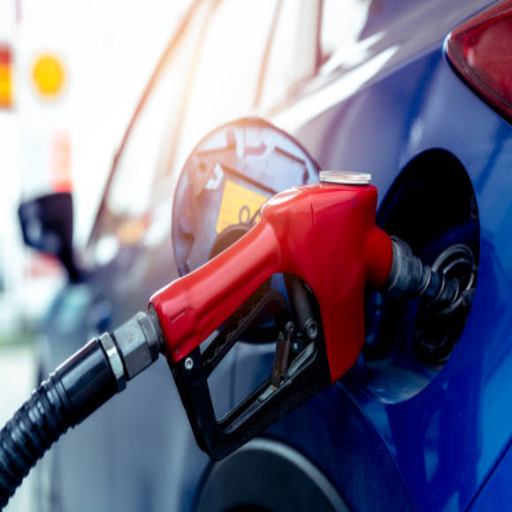
Gas pumps simply transfer fuel from an underground holding tank into the fuel tank of a car. The insertion of the nozzle and squeezing of the handle activate the pumping mechanism, drawing fuel up and through a pipe via suction or pressurization. It then flows through the nozzle into the car’s tank. If the tank has been filled correctly, an automatic shutoff inside the nozzle engages and closes the fuel flow to prevent any spills. The mechanism has been set up to be efficient, safe, and user-friendly.
The Mechanism Behind a Gas Pump
Modern gas pumps incorporate advanced technology to quickly transfer fuel while offering safety and ergonomics to the end user. At the center of the system lies the pump mechanism, which exchanges either suction-based instructions or pressurized turbines to lift the fuel. Suction pumps generated a partial vacuum to suck fuel upwards, whereas the pressurized system used motor-driven impellers to exert pressure on the fuel.
Flow Rate Control
The fuel system is then regulated by a control valve within the pump, which ensures that the fuel is delivered at a constant rate, typically between 5 and 10 gallons/minute for consumer-type pumps. Additionally, digital flow meters accurately measure the volume of fuel and communicate this information to the pump display, ensuring customers are charged correctly.
Safety is paramount in the environment of a gas station. The nozzle’s automatic shutoff channel is an application of the venturi effect: It detects a change in air pressure caused by gasoline flowing into the car’s tank; as soon as the tank is nearly full, that pressure change actuates the shutoff valve to instantly stop the flow of fuel, thus preventing any overflow.
Another environmental advantage raised by modern gas pumps is the ability to install vapor recovery systems. Such systems enable the release of fuel vapors that would otherwise escape during refueling and contribute to environmental pollution.
To further enhance user convenience, payment systems now support contactless payment methods, while ensuring rigorous data encryption for secure business transactions. This demonstrates how technology-equipped gas pumps today serve as symbols of functional, efficient, and secure technological applications in all spheres of life.
Understanding the Pump Nozzle and Gas Flow
The pump nozzle at a gas station is a crucial component that enables the correct and safe flow of fuel. Modern pump nozzles have mechanisms for spill and overflow control to deliver gasoline or diesel into a vehicle’s tank, cast precisely. Basic features included in the nozzle include an automatic shut-off mechanism. Using a small hole near the nozzle’s tip, connected to a venturi tube, when the fuel level in the tank blocks airflow through the hole, creating the desired pressure changes, the fuel shutter valve shall be activated, and fuel flow inside the nozzle will stop, ensuring a safe and accurate refueling process.
| Nozzle Type | Flow Rate | Application | Key Features |
|---|---|---|---|
| Consumer Gas Nozzles | 5-10 gallons per minute | Standard passenger vehicles | Automatic shut-off, ergonomic design |
| High-Flow Diesel Nozzles | Over 60 gallons per minute | Large trucks and commercial vehicles | Heavy-duty construction, rapid filling |
Moreover, pump nozzles are constructed from stainless steel or aluminum alloys coated with anticorrosion agents to enhance durability and improve the compatibility of the nozzle with various fuel types, including ethanol blends and biodiesel.
Inside the pump system are flow meters used to measure the volumetric flow of fuel dispensed to within fractions of a gallon, thereby enhancing the accuracy of fuel delivery. Sensor technology advances have refined measurement to such an extent that the current margin of error is acceptably low, ensuring that they maintain a very stringent regulatory standard level. Such advantages significantly enhance the reliability and safety of gas stations, which in turn make them an integral part of the global transportation infrastructure.
Role of Valves in Gas Pumps
Regarding the fuel pumps, the valves play a crucial role in ensuring operational security, efficiency, and the precise delivery of fuel. These valves regulate the fuel flow from the storage tanks to the dispensing nozzles, preventing any possibility of leakage or backflow. Check valves are among the most crucial valves required for this specific pump system. Such valves allow only one-way flow of fuel, thereby eliminating the possibility of reverse flow that can harm the system or tarnish the fuel quality.
- Check Valves: Allow only one-way flow of fuel, preventing reverse flow that can harm the system
- Pressure Relief Valves: Maintain safe working pressures within the system’s operation, preventing over-pressurization
- Solenoid Valves: Electronically controlled for accurate fuel dispensing with very short response times
Accuracy and Efficiency
Data from the industry indicate that high-quality valves, which regulate fuel flow with an accuracy tolerance of approximately 0.5%, minimize fuel wastage, thereby complying with government legislation. In addition to countermeasures against draining, modern designs incorporate vapor recovery to reduce environmental impact by capturing unwanted vapors from the dispensing process and preventing fuel loss.
Modern Gas Pump Features

Various features are offered to modern gas pumps, from convenience to safety and environmental protection. They include digital display screens that communicate prices and fuel volume, card readers that facilitate secure and quick payments, and interactive touchscreens that offer additional options, such as receipts or loyalty rewards. Others have sensors that can detect when tanks are full and automatically cease the flow of fuel to prevent spilling and wasting. Moreover, eco designs will have their vapor recovery systems to limit emissions following environmental laws. Modern gas pumps are reliable, easy to use, and efficient due to these technological advances.
Automatic Shut-Off Mechanisms
The automatic shut-off mechanism in fuel dispensers is a defining feature that ensures the smooth and safe refueling of vehicles. It ingeniously combines simple mechanics and physics to determine if the fuel level has reached its brink in the tank. A tiny hole in the steel nozzle is connected to a vacuum line and detects any variation in air pressure. This change in pressure occurs when the fuel levels obstruct the air from flowing into the vacuum; consequently, the nozzle responds by automatically shutting off the fuel, thus avoiding spills and overflow.
In modern days, there are also varying methods of improving the accuracy of the automatic shut-off mechanism by incorporating the use of more advanced sensors. Industry insiders estimate that this system drastically reduces fuel waste, saving thousands of gallons of fuel annually in high-usage fueling stations. These installations are also beneficial from an environmental standpoint because they prevent fuel spills that could threaten soil and groundwater contamination. Therefore, inventiveness combined with practicality ensures that the automatic shut-off mechanisms will keep refueling safe for consumers while also standing for sustainability causes.
Vapor Recovery Systems Explained
Vapor recovery systems have been engineered to intercept and handle gas vapors that would otherwise be emitted into the atmosphere during dispensing, storage, or transfer activities. They constitute an essential component in air pollution control, especially in limiting the emission of volatile organic compounds (VOCs), which contribute to smog formation and respiratory ailments.
| System Type | Function | Efficiency | Benefits |
|---|---|---|---|
| Stage I Systems | Recover vapors displaced during filling of underground storage tanks | Up to 98% vapor recovery | Reduced emissions during tank refilling |
| Stage II Systems | Recover vapors generated during vehicle refueling | Up to 98% vapor recovery | Cleaner air during customer refueling |
Moreover, rapid developments in vapor recovery techniques have progressively made these systems more energy-efficient and cheaper to install and maintain. Current systems use sensors and control automation to maximize recovery performance while minimizing inspection and maintenance costs. This upgrade, therefore, pays off considerably for industries by both enabling compliance with environmental laws and reducing fuel losses from vapors.
Environmental Impact
When it comes to saving the environment, these vapor recovery systems are a welcome addition. Data show that the large-scale use of such machinery could reduce millions of pounds of VOC emissions annually, ensuring clean air and, consequently, good health outcomes. They also further promote the safety of its plants and communities by lowering the risk of fire and explosion due to the release of flammable vapors.
Safety Features of Gas Pumps
Since recent gas pumps come with many added modern safety features, these ensure protection for the consumer, the employee, and the environment.
Breakaway Valves
Automatically stops fuel flow when the nozzle is pulled with force from the dispenser, preventing spillage and reducing fire risk.
Emergency Shut-Off Switches
Allow attendants or users to immediately stop fuel flow in the event of a malfunction or hazard.
Anti-Static Grounding Systems
Mitigate the discharge of static electricity and prevent accidental ignition due to sparks.
LED Displays and Digital Monitoring
Provide real-time information on pump status and fault occurrence for quick maintenance response.
Gas Pump Operation at Gas Stations
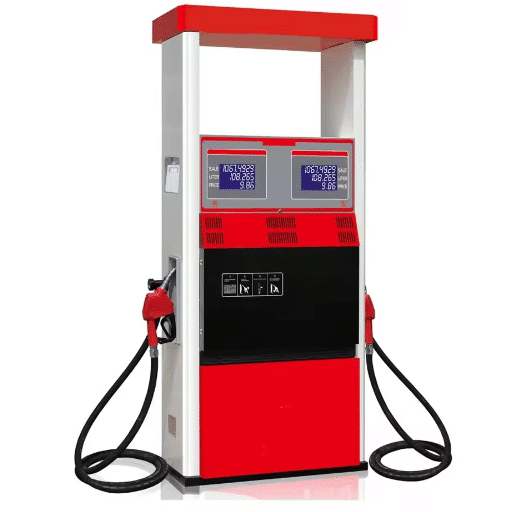
Gas pumps employ a motorized suction mechanism to draw fuel from the underground storage tanks. Once the customer picks up the nozzle, fuel flows through the pipe until the mechanism shuts off the flow to stop filling when the car tank is full, aided by an automatic shut-off valve. Modern pumps feature digital displays that register the volume and price of fuel dispensed, providing customers with added convenience and benefit.
How to Use a Gas Pump Efficiently
Being efficient at the gas pump means saving time, which also means saving safety and accuracy. Steps below will allow you seamless refueling:
Prepare in Advance
Before you arrive at the pump, determine the type of fuel your vehicle requires (regular, mid-grade, or premium). This information can usually be found in your vehicle’s owner manual or sometimes on the inside of the fuel cap cover. Be aware of this beforehand to avoid costly errors and ensure the smooth operation of your engine.
Choose the Right Payment Method
Decide whether you will want to pay inside the station or pay at the pump with your card. Most new-generation gas pumps accept credit or debit cards, or even allow for contactless payment, making transactions very fast.
Position Your Vehicle Correctly
When approaching a fuel pump, align the vehicle so that the fuel tank is positioned near the pump. Use the tiny arrow on the fuel gauge to show which side the fuel tank is on.
Observe All Safety Precautions
Keep the engine off when refueling to avoid potential fire hazards. Do not smoke or operate electronic devices around the pump, as both pose safety hazards in the presence of fuel vapors.
Dispense Fuel
After inserting the nozzle into the fuel tank, select the required fuel grade. Properly hold the fuel nozzle, then engage the trigger while dispensing the fuel. The majority of the pumps have automatic shut-off features to stop the outflow when floods occur; therefore, it is best to let the system shut down the flow automatically.
Watch Economics and Efficiency
Gas prices and fuel economy are dynamic; improving fuel efficiency would practically bring you more savings. Although one study presents positives, it suggests that tire pressure and speed-reducing activities can enhance fuel efficiency by nearly 15%. Another metric to watch is your normal fuel consumption, which can help identify causes of leaks or poor vehicle performance.
Replace the Nozzle and Close the Cap
Once fueling is finished, replace the nozzle firmly back onto the pump and fasten the gas cap tightly to reduce gas evaporation and contamination.
Following these procedures, along with proper vehicle maintenance, can help you achieve optimal fuel efficiency and ensure a safe and smooth refueling experience.
Knowing When to Shut Off the Pump
Knowing when to turn off the pump is crucial for safe and efficient refueling, as well as for saving money. Most modern-day pumps are fitted with an automatic shut-off feature so that when the tank is deemed “full,” the fuel flow ceases. This mechanism prevents overfilling and minimizes the risk of hazardous spillage.
Overfilling Risks
Research suggests that overfilling the gas tank could damage the evaporative emissions system, which is designed to capture and recycle fuel vapors. When fuel is heated and expands, an overfilled tank allows less space for expansion, which can build up pressure and lead to expensive repairs. Topping up your gas tank is the last thing that a technician would ever suggest to you; those few extra dribbles only evaporate and promote needless fuel wastage and air pollution.
Watching for a slowdown in the pump flow or listening for a change in the sound of the nozzle can help you catch it right before it goes automatic. Sometimes the flow will slow down, or it will sound different—the fuel tank is almost complete. Paying attention to the cues that nature provides will help make refueling a safe and efficient process.
Common Issues and Troubleshooting Tips
Gas filling can sometimes be troublesome, but most complications can be resolved through practical approaches and awareness. Some common problems faced during fueling and how to fix them in detail are as follows:
Gas Pump Keeps Shutting Off Prematurely
This occurs when the pump’s automatic shutoff triggers prematurely due to either a clogged vapor recovery system in the nozzle or unusual pressure in the tank. To troubleshoot, try pulling the pump nozzle out slightly or adjusting its angle to allow for better airflow. If the problem persists, the gas station’s equipment may need servicing; consider notifying a station attendant.
Slow Fuel Dispensing
Pumps run slowly when the pump is faulty or when clogged filters block the station’s fuel lines. To determine if it’s the issue, try replacing the pump to see if the problem persists. Slow flows can also be caused by peak demands when stations run low on their stock, so you may want to visit during less busy times for smoother refueling.
Leaking or Dripping Fuel
A dripping nozzle is both a waste and a hazard. Always check the pump nozzle before using it. Look for visible cracks and damage. If you smell the leakage, stop fueling immediately and notify the station personnel. Regular maintenance by the gas station would significantly prevent such hazards.
Fuel Overflow or Spillage
Spills typically occur when filling exceeds the automatic shutoff level, resulting in wasted fuel and contributing to pollution. To avoid spills, never attempt to “top off” your tank after the fuel nozzle has shut off inside. Every year, spilled gasoline contributes to the evaporation of volatile organic compounds (VOCs) in the atmosphere, exacerbating the air quality problem.
Incorrect Fuel Type Usage
Using the incorrect fuel type can damage your vehicle’s engine. Always check for the correct fuel grade for your car in the owner’s manual or on the sticker pasted inside the fuel door. Since filling up with the wrong type of fuel is very expensive to repair, it is better to double-check before pumping.
Payment Method Issues
Credit or debit card readers have been known to malfunction. Ensure your card is clean and free of scratches that could impede the transaction. Should the problem persist, try another pump or ask a station attendant for assistance. Avoiding problems altogether would be relatively easy if another method of payment, such as cash, were kept handy.
By staying alert and following the above troubleshooting tips, you can make your fueling experience much smoother and efficient.
Environmental Considerations
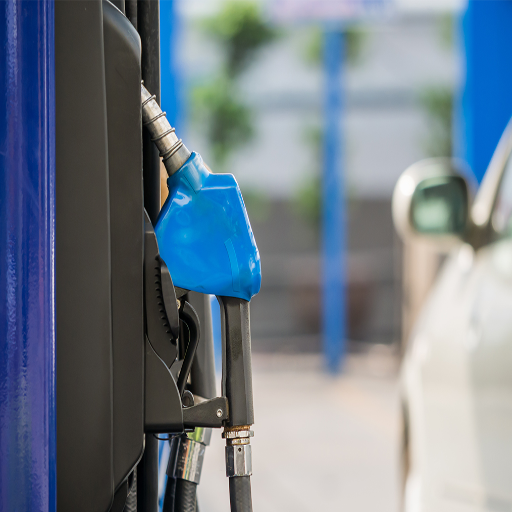
Consider and be responsible for the environment when refueling. Never fill the tank to the brim or allow spillage, as it pollutes both air and soil. Always ensure that the gas cap is tightly fastened, so vapors that are possibly harmful to the atmosphere cannot escape. Fueling during the cool part of the day, either early in the morning or late in the evening, will help control the generation of evaporative emissions. Adopting these steps will not only take care of your environment but also your vehicle.
Impact of Gasoline and Fuel Storage Tanks
Gasoline and fuel storage tanks pose a significant threat to environmental and human health. If poorly maintained or old, such types of storage tanks can leak some chemicals that are harmful to soil and groundwater, such as benzene, toluene, and xylene. A report by the Environmental Protection Agency (EPA) stated that in the U.S., leaks from underground storage tanks (USTs) are one of the leading causes of groundwater contamination, thereby threatening clean drinking water for millions of people.
Additionally, fuel storage tanks pollute the air with emissions of volatile organic compounds (VOCs) and hazardous air pollutants (HAPs). These pollutants react and form ozone at ground level, which in turn increases smog formation and poses health hazards to the human respiratory system. The American Lung Association further cites the adverse effects of these gases on increased incidences of asthma and airway obstructive diseases, especially in urban areas.
The best way to mitigate the danger posed by such tanks would be to implement strict regulations, including periodic inspections and the use of double-walled, sealed tanks with more sophisticated leak-detection facilities. Additionally, depending on other storage techniques or procured pure fuel technology, it can help reduce the environmental weight posed by the existing storage system for gasoline and diesel. Such efforts would ensure the safety of natural resources and contribute to the community’s health and the stability of ecosystems.
Modern Fuel Innovations and Their Benefits
Future of Fuel Technology
The latest developments in fuel technology offer huge benefits environmentally and economically. The advanced technologies, including electric vehicles, hydrogen fuel cells, and biofuels, reduce our dependence on fossil fuels while emitting fewer greenhouse gases into the atmosphere. These technologies must be viewed as supporting a cleaner environment, energy efficiency, and energy sustainability. Hence, embracing these innovations is a step towards a healthier future for everyone and the Earth.
Overflow Prevention Techniques
Overflow prevention is a fundamental safety mantra for any system; it must be safe, efficient, and working at all times. Various techniques include:
- Proper System Design: Designing a system with an established capacity limit serves as a preventive measure for overflow. This includes calculations of maximum loads and buffer zones set up as safety margin pads in the design.
- Monitoring and Early Detection: Potential overflow situations can be detected early enough to allow for suitable intervention; thus, sensors and monitoring tools track current capacity levels.
- Automatic Controls: These go a step further by actually controlling flows to prevent any eventuality of overflow. These systems typically operate within predefined parameters with minimal human intervention.
- Regular Maintenance: Regular inspection and maintenance of equipment, pipes, and storage tanks are crucial to keep everything in good working order and minimize the risk of malfunctions that could lead to overflow.
- Flow Diversion Systems: An alternate route or overflow tank redirects excess flows, preventing fluids from spilling and damaging the primary system.
Complementing interoperability of the above talents, any organization or system, in general, should visibly reduce overflow instances in the interest of increased safety and sustainability.
Master Your Fuel Station Experience
Understanding how gas pumps work, their safety features, and proper operation techniques empowers you to fuel efficiently and safely. From the intricate mechanisms that deliver fuel from underground tanks to your vehicle, to the environmental considerations that protect our planet, every aspect of gas pump operation serves a crucial purpose. By following best practices, staying vigilant for potential issues, and adhering to environmental guidelines, you contribute to a safer and more efficient fueling experience for everyone. Remember, the technology behind these everyday marvels continues to evolve, making our refueling process increasingly safer, more accurate, and environmentally responsible.
Reference Sources
Frequently Asked Questions (FAQs)
How does a pump station?
A gas pump works by siphoning fuel from underground storage tanks through a series of pipes and valves. Once the pump nozzle is inserted into the gas tank of your vehicle and the pump handle is pulled, the submersible pump is activated, creating suction that allows gasoline to flow. Now the fuel travels through the pump nozzle into the gas tank of your vehicle.
What is the importance of the gas pump nozzle in the current station?
The gas pump nozzle plays a crucial role in this fuel delivery operation, ensuring it is done safely and efficiently. When inserted inside the vehicle’s fuel tank, the nozzle creates a seal that allows fuel to flow into the tank and prevents spills. The nozzle also features a valve that shuts off the fuel when the tank is full, utilizing the automatic shut-off feature to avoid overfilling.
What are the safety features of a modern gas pump?
Modern gas point pumps come with some safety features, such as vapor recovery systems that reduce fuel vapor emissions. They also shut off the flow of gas at automatic fills. Some pumps have sensors that hold the nozzle handle open, allowing the customer to pump the gas without needing to keep squeezing the handle.
How does the auto shut-off in a gas pump function?
This automatic shut-off feature operates through a simple mechanism. As the level of fuel in your tank rises, a vacuum is created inside the nozzle. This vacuum activates a valve that stops fuel flow, thus ending the pumping process once the tank is full. It will prevent any material spillage or overfill, making the fueling practice much safer.
What is a submersible pump, and how is it used?
A submersible pump is a type of fuel pump located inside the storage tanks at gas stations, to pump gasoline upward through pipes to the surface dispenser. The gas pump causes the submersible pump to draw fuel from the tank and deliver it through the dispenser nozzle into your vehicle’s fuel tank.
How do vapor recovery systems operate in gas pumps?
Vapor recovery systems at gas pumps collect the fuel vapors released during the fueling operation. While pumping the gas, vapors are released from the fuel tank. The system draws the vapors back into the storage tanks, keeping raw pollutants out of the air and thereby increasing environmental safety.
What happens if the gas pump nozzle is not placed?
When the gas pump nozzle is not inserted correctly into your vehicle’s gas tank, this situation can lead to fuel spills and inefficient fueling. The nozzle is not able to create a seal because fuel escapes during pumping. Ensure the nozzle is fully inserted, without engaging any obstructions, and utilize the working safety features.
How do gas pumps prevent fuel overflow?
Gas pumps prevent overflow by employing automatic shut-off valves and sensors. At a certain height of the gas level in your tank, the mechanism inside the nozzle detects the rising gas and consequently triggers the valve to shut off the flow. This is intended to prevent overfilling and ensure that you fill your tank to a suitable level.
Why monitor when shutting the pump?
Knowing when to shut the pump is crucial for safety and efficiency. The automatic shut-off works in your favor, but attentive pumping of gas is imperative to prevent spills and overfills. Customers must note the gas level as they listen for the click of the nozzle, which indicates that the tank is complete and the flow of gas has ceased.

